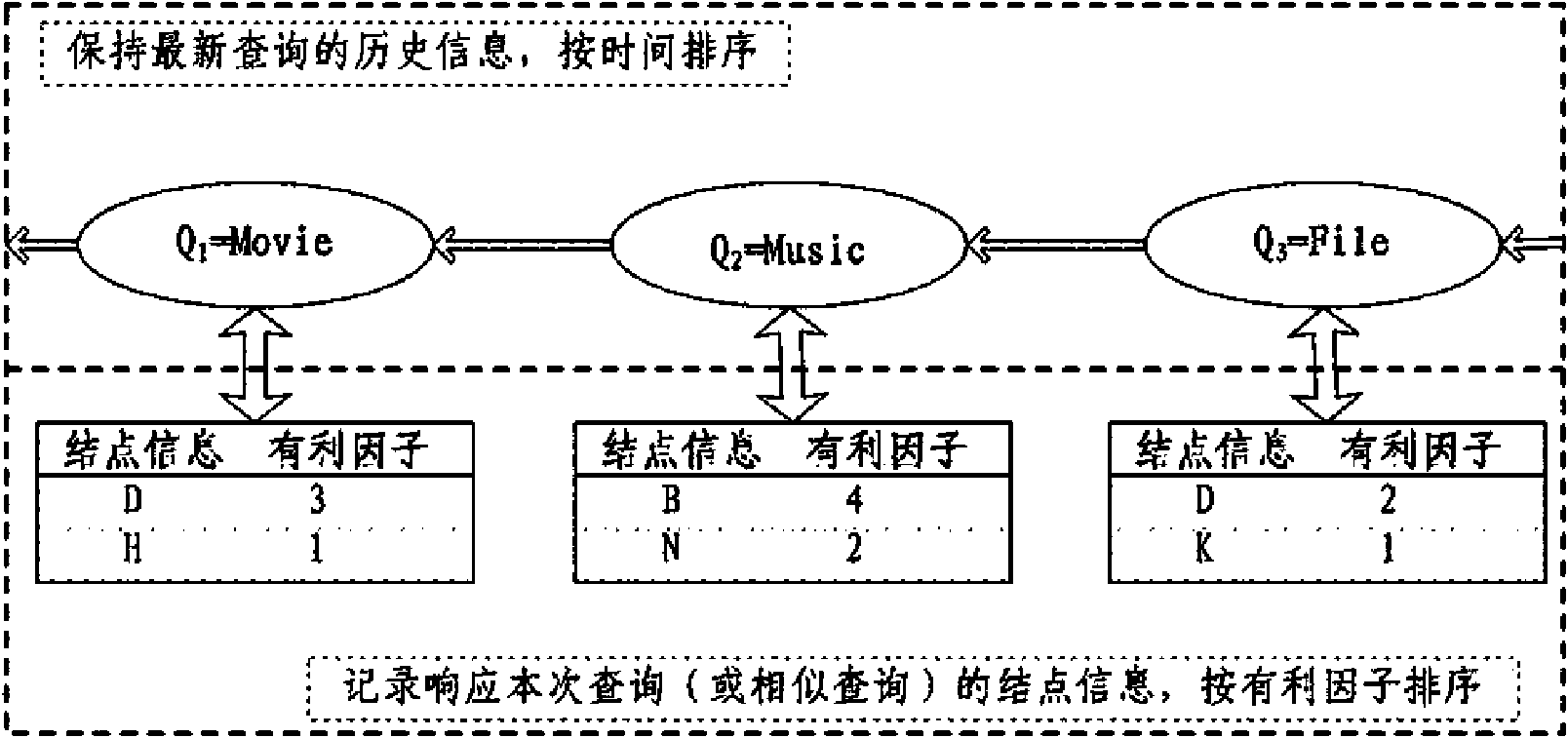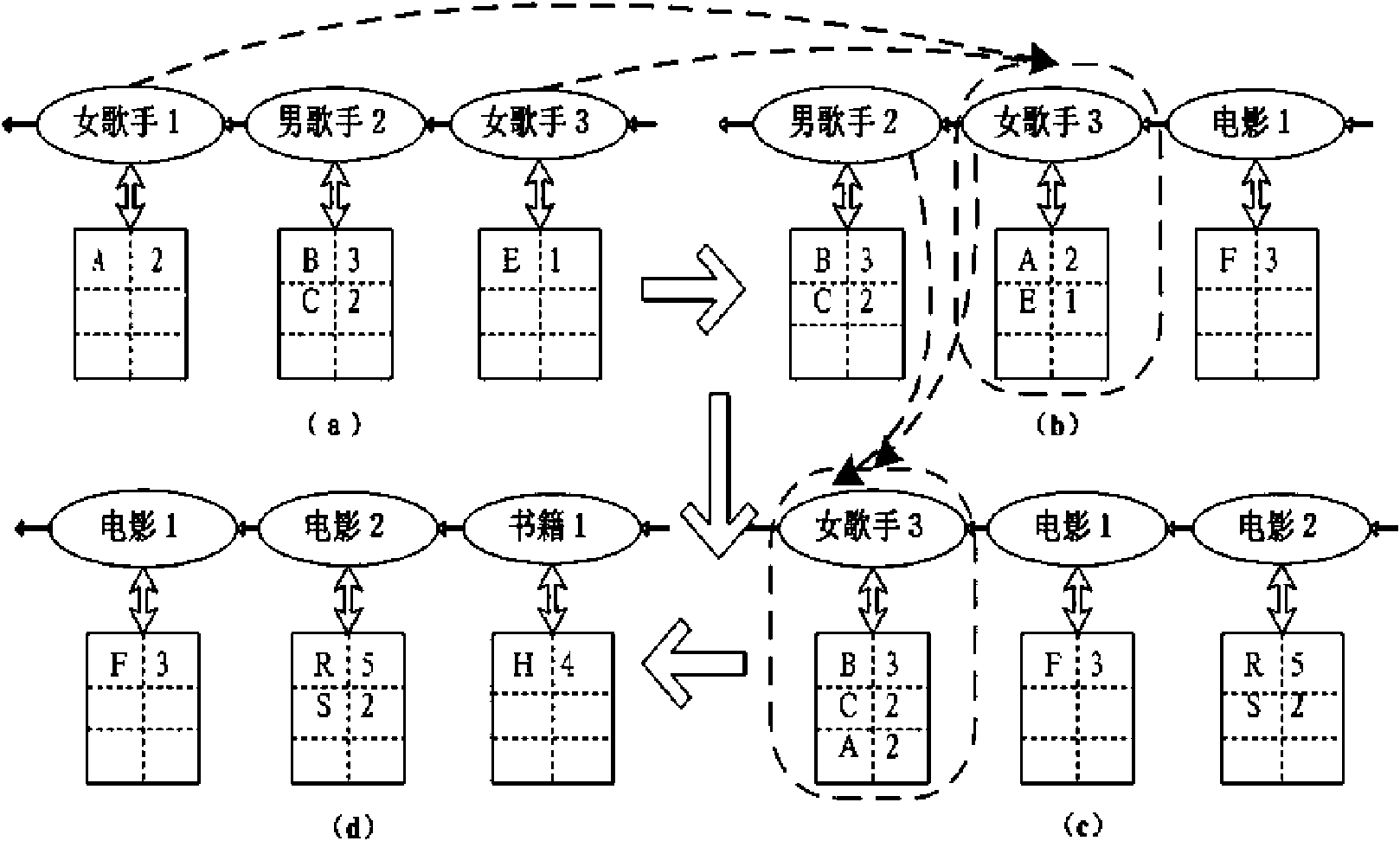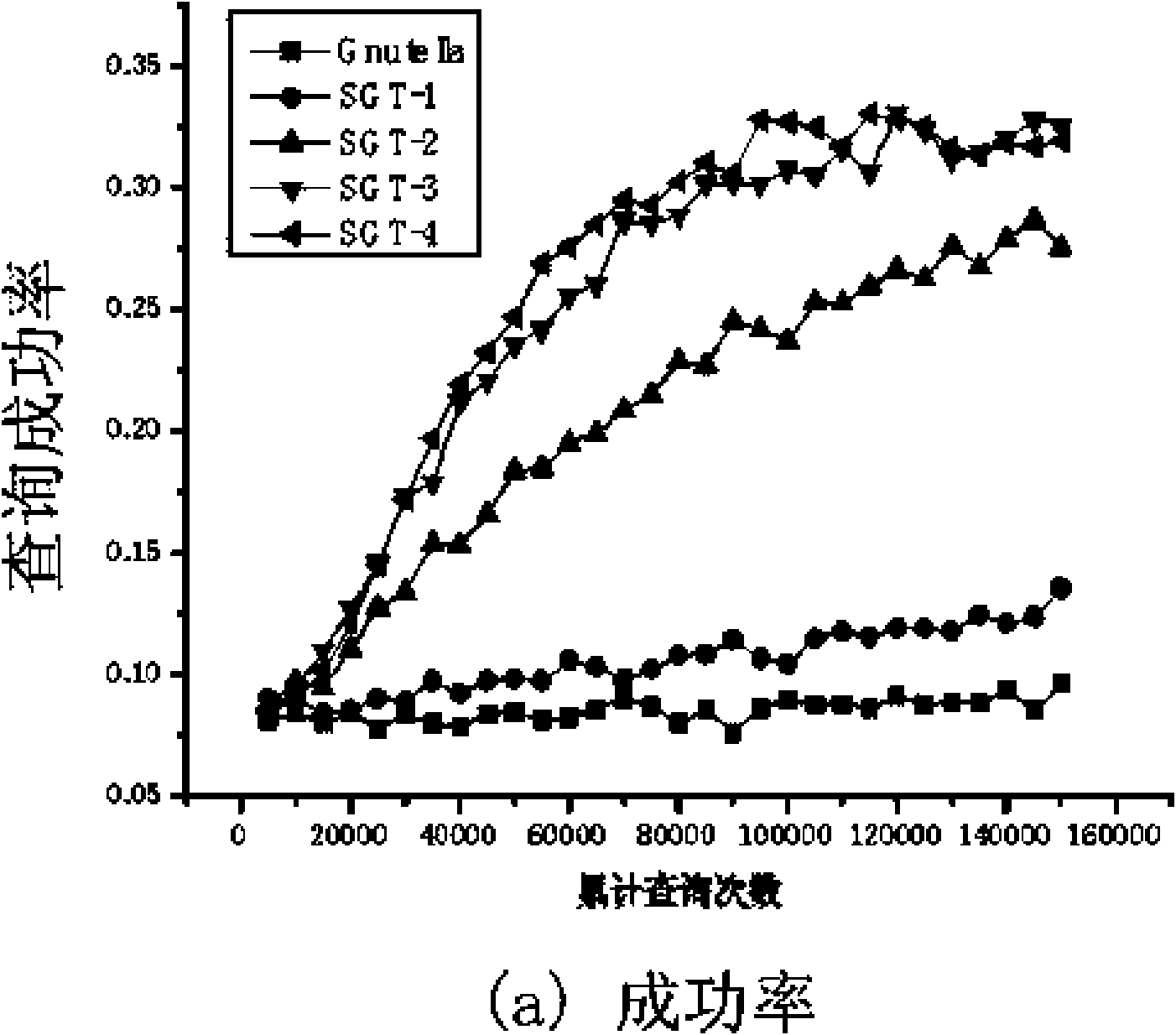Query statistic-based guidance searching method for P2P system
A technology of query statistics and search methods, applied in computing, special data processing applications, instruments, etc., can solve problems such as the contradiction between data query success rate and query overhead, high overhead, and inability to guarantee query success rate, so as to improve the query success rate , improve robustness, and reduce query latency
- Summary
- Abstract
- Description
- Claims
- Application Information
AI Technical Summary
Problems solved by technology
Method used
Image
Examples
Embodiment Construction
[0015] The present invention can be divided into three stages: establishing a statistically-oriented table, using an algorithm for querying the statistically-oriented table, and an algorithm for adaptively updating the statistically-oriented table.
[0016] Finally, some simulation experiment results will be provided.
[0017] Phase 1: Establish a statistically oriented table
[0018] For the convenience of the following article and algorithm description, first give some symbolic meanings, as shown in Table 1.
[0019] Table 1 Symbol table
[0020]
[0021] This article is based on two reasonable assumptions: (1) When users share resources, they are likely to share related resources. (2) Users request resources in a relatively concentrated time, with certain preferences. The first hypothesis and literature [18] The local phenomenon of interest described in is similar. The second hypothesis is the result of analysis of user behavior. Users requesting network resources within a relativ...
PUM
 Login to View More
Login to View More Abstract
Description
Claims
Application Information
 Login to View More
Login to View More - R&D
- Intellectual Property
- Life Sciences
- Materials
- Tech Scout
- Unparalleled Data Quality
- Higher Quality Content
- 60% Fewer Hallucinations
Browse by: Latest US Patents, China's latest patents, Technical Efficacy Thesaurus, Application Domain, Technology Topic, Popular Technical Reports.
© 2025 PatSnap. All rights reserved.Legal|Privacy policy|Modern Slavery Act Transparency Statement|Sitemap|About US| Contact US: help@patsnap.com



